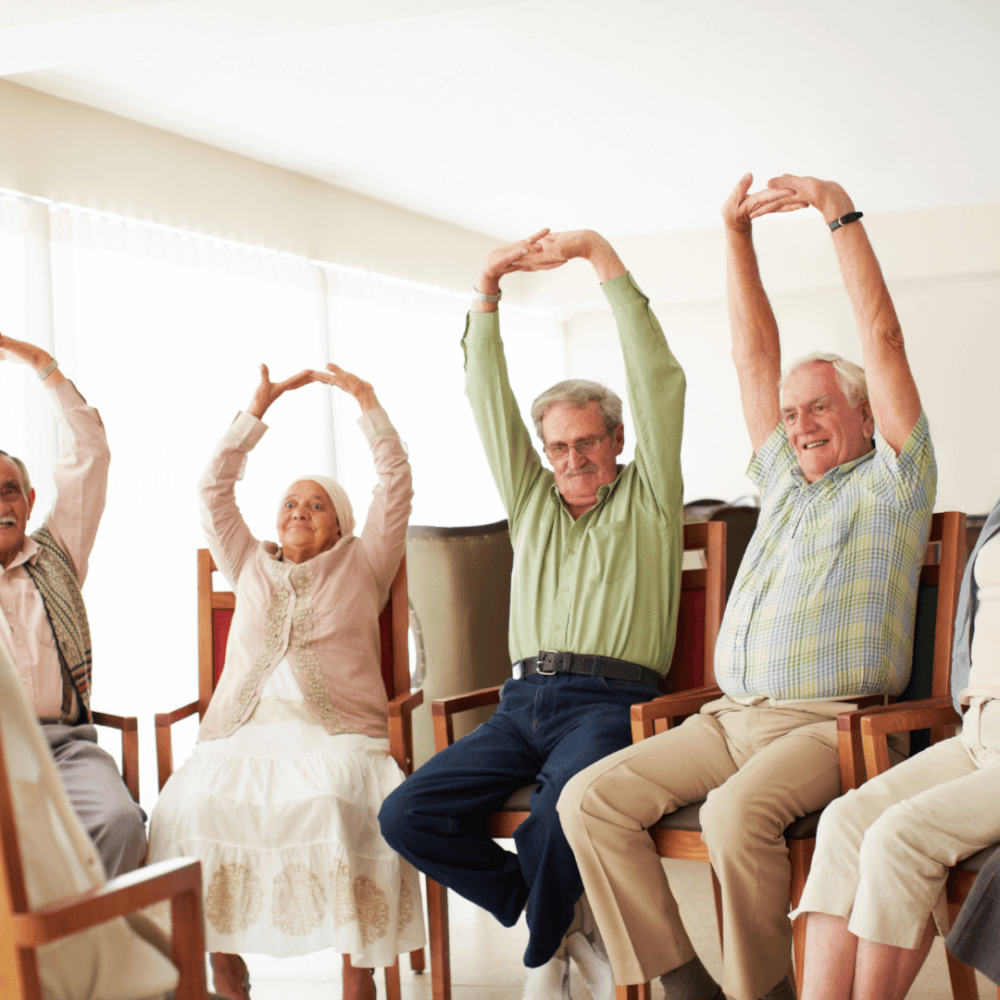Fall Prevention Tips
Discover practical strategies to reduce fall risks and live life to the fullest.

As we age, the risk of falls can increase, often leading to serious injuries and a loss of independence. However, with proactive measures and awareness, seniors can significantly reduce their risk of falling, giving them the confidence to go about their day as usual.
In this article, we’ll provide the essential fall prevention strategies to keep Mum and Dad mobile and happy.
Regular Exercise
Regular exercise is essential in reducing the fall risk among seniors. Frequent exercise enhances balance, coordination, strength, and flexibility – all critical for preserving stability and averting falls.
Seated exercises are a great place to start, particularly for those with more difficult mobility (or after a fall with your GP’s blessing). The NHS website has some simple chair exercises to get you started.
Strength training activities improve bone density and muscle tone, lowering the risk of fractures in a fall. Balance and coordination exercises like tai chi or yoga can also help seniors improve their control over their movements and their ability to respond quickly to changes in their equilibrium.

Mindfulness about diet and sleep
Eating well, staying hydrated and getting a good night’s sleep are good for the body, especially when it comes to your senses and body reactions during or after a fall.
Consider how you can work in simple but nutritious meals, even if medication spoils appetites.
Consider making environments, like living rooms, easy to nap in. That can be especially helpful after a poor night’s rest.

Medication Managment
Medication management is crucial in reducing the fall risk among older people. Drug side effects, such as sleepiness or dizziness, may considerably increase the chance of falling.
Healthcare professionals should regularly examine and monitor drugs to detect potential dangers and make any modifications or changes.
Our Care Professionals are ideally placed to recognise, report and record any changes in clients after taking medication so we can alert medical professionals immediately to any concerns.

A safe environment
A safe environment reduces risks. Obstructions, including clutter, slick surfaces, and poor lighting, could cause accidents.
Eliminating trip hazards, adding grab bars to bathrooms, and installing extra handrails on staircases can help seniors walk around their homes safely and confidently.
Having adequate lighting enhances visibility and lowers the risk of falls or mishaps, especially in poorly lit regions.
Battery-operated floor-level motion-sensor lights are a quick and cost-effective way to add more lighting to hallways, bathrooms and bedrooms.
To further improve safety, ensure that furniture is positioned for easy transit and that walkways are clear.
In addition to lowering the risk of falls, a safe environment helps seniors maintain their independence and peace of mind, enabling them to age in comfort and security

Proper footwear
Proper footwear is essential in reducing fall risks among older people by providing support, stability, and traction.
Quality shoes with good arch support and non-slip soles help distribute body weight evenly, minimising the chances of slipping or losing balance, particularly on slippery surfaces. Prioritising supportive, non-slip footwear enables seniors to maintain their independence, mobility, and overall safety, empowering them to navigate various environments confidently and reducing the risk of falls and related injuries.

How hearing affects fall risk
People with clear aural perception can respond and modify their motions in response to environmental risks, such as oncoming cars or people. Hearing loss can make it more challenging to interpret auditory cues, raising the risk of mishaps and falls, particularly in crowded or bustling areas. Additionally, the sense of sound plays a role in spatial awareness, aiding in balance and safe environment navigation.
Frequent hearing evaluations and assistive technology can improve general communication and quality of life for Mum and Dad and increase safety by encouraging independence and self-assurance in their day-to-day activities.
How restricted vision impacts likeliness of falls
Just as those with hearing challenges face extra obstacles in spatial awareness, so do those with poor eyesight. Regular sight tests and medication checks can prevent many problems. So, too, can simple home updates, such as better lighting, non-slip flooring, deeper colour contrasts, removing obstacles from walkways and organisation. Always think about how you can simplify tasks.